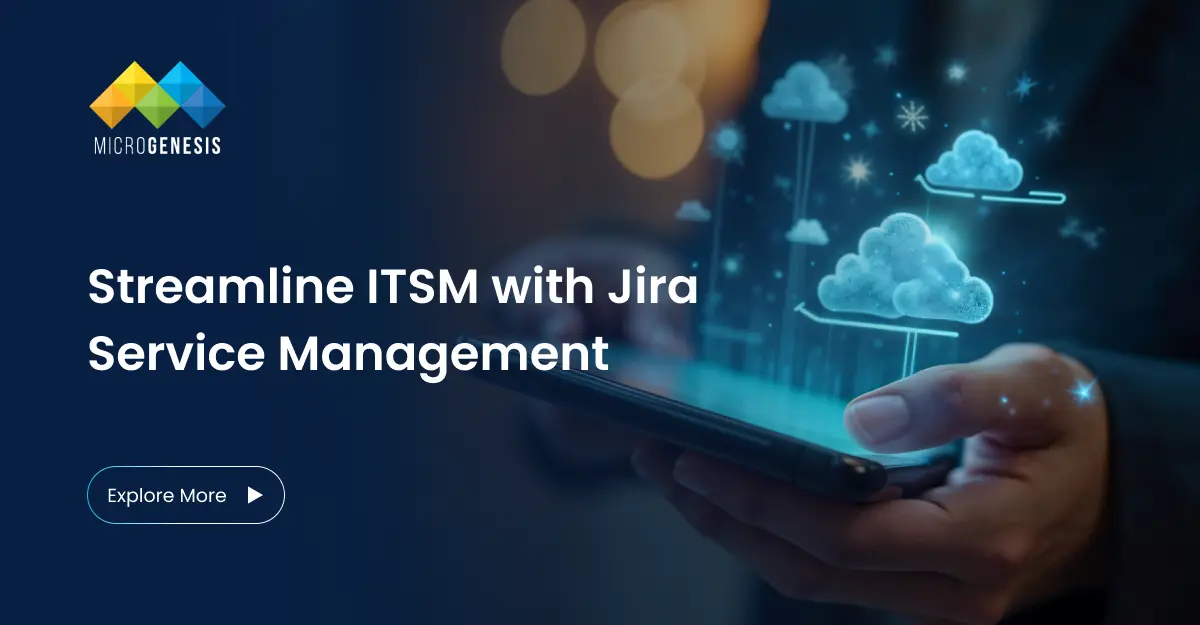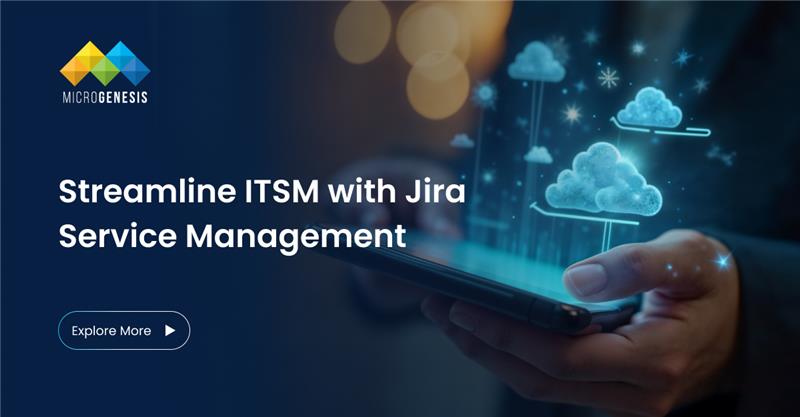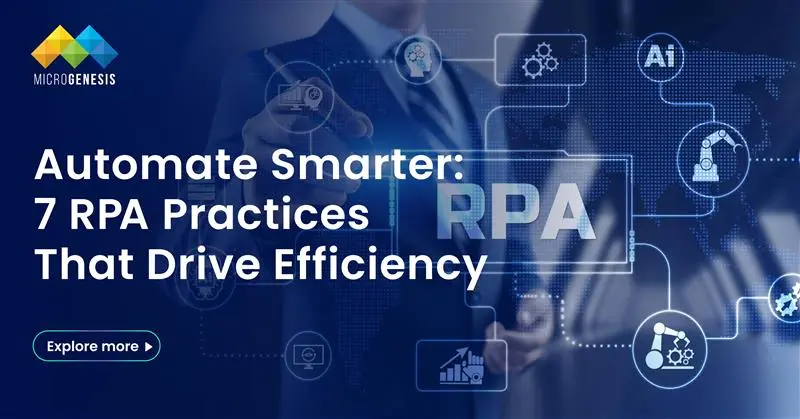
by microadmin | Oct 14, 2025 | DevOps
In the era of digital transformation, embedded software development has become the invisible backbone of innovation. From smart appliances and automotive systems to medical devices and industrial robots, embedded solutions enable hardware to think, communicate, and respond intelligently.
Every time a smartwatch tracks your heart rate, or a car automatically applies the brakes, it’s embedded software performing real-time computations behind the scenes. As products become smarter and more connected, the sophistication of embedded systems continues to expand — demanding precision engineering, robust processes, and advanced development tools.
This article explores how embedded software companies design and build reliable systems, outlining the core development processes, essential tools, and best practices shaping the future of embedded solutions.
2. What Is Embedded Software Development?
Embedded software development refers to the process of creating specialized software that runs on dedicated hardware devices — often with specific functions, limited computing resources, and real-time performance requirements.
Unlike desktop or web applications, embedded software interacts directly with hardware through microcontrollers, sensors, and actuators. It’s engineered to perform deterministic tasks (predictable and repeatable behavior) under strict constraints on memory, processing power, and energy consumption. By leveraging embedded DevOps solutions, organizations can streamline development, automate testing, and ensure continuous integration and delivery, resulting in more reliable and efficient embedded systems.
2.1 Characteristics of Embedded Software
- Hardware-Specific: Tailored to a particular processor or board configuration.
- Real-Time Performance: Must respond instantly to input signals or sensor data.
- Reliability and Safety: Designed to operate flawlessly for years, often in mission-critical environments.
- Resource Efficiency: Optimized for limited CPU cycles, RAM, and storage.
- Longevity: Must remain maintainable and upgradable over extended product lifecycles.
2.2 Real-World Examples
- Automotive control units (ECUs) managing braking and steering systems.
- Smart home devices like thermostats, security cameras, and voice assistants.
- Industrial automation controllers and robotics systems.
- Medical devices such as insulin pumps or diagnostic equipment.
- Aerospace and defense navigation or communication systems.
In all these examples, embedded software forms the “brain” that drives hardware behavior — making it a critical enabler of innovation.
3. The Embedded Software Development Process
The development lifecycle for embedded software combines the rigor of traditional software engineering with the precision of hardware design. While the process may vary between embedded software companies, the fundamental phases typically include:
3.1 Requirements Analysis
The foundation of any embedded project lies in understanding functional and non-functional requirements.
Engineers define what the system must do — including timing constraints, power consumption targets, and hardware interfaces.
Key steps include:
- Gathering system-level specifications from stakeholders.
- Defining performance benchmarks (e.g., response times under 10 ms).
- Assessing regulatory and safety standards (e.g., ISO 26262, IEC 62304).
- Selecting target hardware (microcontroller, processor, memory, sensors).
A well-documented requirements phase ensures alignment between hardware, software, and product objectives.
3.2 System and Software Design
Once requirements are clear, architects translate them into detailed system design documents. This phase defines how software interacts with hardware and other system components.
- Architecture Definition: Layered models separating hardware abstraction, middleware, and application logic.
- Interface Design: Defining APIs between modules and peripheral devices.
- Real-Time Operating System (RTOS) Selection: Choosing an OS such as FreeRTOS, VxWorks, or QNX for deterministic scheduling.
- Communication Protocols: Defining CAN, SPI, I²C, UART, or Ethernet interfaces.
This design stage ensures the system remains scalable, testable, and maintainable throughout its lifecycle.
3.3 Development and Coding
The implementation phase converts design into code, typically using C, C++, or increasingly Rust for safety-critical systems. Developers work closely with hardware engineers to ensure compatibility with target boards.
Common Development Activities:
- Writing firmware and driver code for sensors, actuators, and communication interfaces.
- Implementing real-time task scheduling, interrupt handling, and power management.
- Using cross-compilers to build code for target architectures (e.g., ARM, RISC-V).
- Simulating system behavior before deploying on actual hardware.
Code quality is paramount; static analysis tools and peer reviews are essential to detect defects early in the cycle.
3.4 Integration and Testing
Testing embedded software is far more complex than desktop or cloud applications because of tight coupling with hardware and real-time constraints.
Testing Levels Include:
- Unit Testing: Validates individual modules or functions.
- Integration Testing: Ensures correct communication between modules.
- Hardware-in-the-Loop (HIL) Testing: Simulates physical environments to verify software–hardware interaction.
- System Validation: Confirms compliance with performance, safety, and regulatory standards.
Many embedded software companies rely on Continuous Integration/Continuous Deployment (CI/CD) frameworks customized for firmware builds to maintain consistency and traceability.
3.5 Deployment and Maintenance
Once validated, software is deployed to production devices using programming interfaces such as JTAG or SWD.
However, development does not end at deployment — maintenance and updates are crucial for long-term reliability.
Modern embedded systems support Over-the-Air (OTA) updates, enabling secure firmware upgrades without physical intervention. This practice enhances product longevity and security, particularly for IoT devices.
4. Essential Tools in Embedded Software Development
Embedded software engineering depends on a diverse tool ecosystem. From design to debugging, each stage relies on specialized solutions to streamline workflows and ensure quality.
4.1 Integrated Development Environments (IDEs)
IDEs combine editors, compilers, and debugging tools in a unified workspace. Popular options include:
- Keil µVision (ARM development)
- Eclipse-based IDEs (e.g., STM32CubeIDE, MPLAB X)
These environments provide device libraries, project templates, and visualization tools that accelerate firmware creation.
4.2 Compilers and Build Systems
Embedded developers rely on cross-compilers to translate high-level code into machine instructions for the target architecture.
Examples include:
- GCC (GNU Compiler Collection) for ARM or RISC-V.
- Clang/LLVM for modern embedded targets.
- CMake, Make, and Bazel for build automation.
Optimization flags and linker scripts are fine-tuned to balance speed, memory footprint, and power efficiency.
4.3 Debugging and Simulation Tools
Because debugging on real hardware can be challenging, simulators and debuggers are essential for diagnosing issues.
Common tools:
- JTAG/SWD Debuggers for step-through analysis.
- Logic Analyzers and Oscilloscopes for timing diagnostics.
- QEMU for virtual hardware simulation.
- GDB and SEGGER J-Link for live debugging.
These tools help identify issues like memory corruption, timing drift, and interrupt conflicts early in the process.
4.4 Real-Time Operating Systems (RTOS)
An RTOS ensures that embedded applications execute deterministic tasks within defined time constraints.
Popular RTOS platforms include:
- FreeRTOS – lightweight and open source, widely used for IoT.
- VxWorks – preferred in aerospace and defense.
- QNX Neutrino – renowned for automotive safety compliance.
- Zephyr OS – scalable and community-driven, backed by the Linux Foundation.
RTOS selection depends on certification needs, licensing models, and hardware resources.
4.5 Version Control and CI/CD Tools
Version control enables traceability and team collaboration across large projects:
- Git, GitHub, GitLab, and Bitbucket for code management.
- Jenkins, GitLab CI, and Azure DevOps for automated builds and testing pipelines.
By integrating CI/CD with embedded workflows, teams achieve repeatable builds and reduce regression risks.
4.6 Static and Dynamic Analysis Tools
Ensuring software integrity is vital in embedded environments, particularly those involving safety-critical applications.
Tools like Coverity, Polyspace, and Cppcheck analyze code for potential runtime errors, memory leaks, and compliance with standards such as MISRA C/C++.
Dynamic analysis complements this by monitoring performance, detecting race conditions, and validating timing behavior under load.
4.7 Configuration Management and Issue Tracking
Professional embedded software companies maintain rigorous configuration and issue tracking processes to manage versions, bugs, and documentation.
Tools such as Jira, Confluence, and Perforce provide visibility, audit trails, and accountability throughout the lifecycle.
5. Best Practices in Embedded Software Development
5.1 Design for Testability and Modularity
Modular architecture facilitates parallel development and simplifies integration.
Designing with test hooks and simulation interfaces allows easier validation and debugging.
Read More: System Modeling: The Key to Validating Requirements and Building Embedded Systems
5.2 Adhere to Industry Standards
Compliance with standards like ISO 26262 (automotive), IEC 62304 (medical), and DO-178C (aerospace) ensures safety, reliability, and regulatory approval.
5.3 Prioritize Security Early
With connected embedded systems (IoT), security is not optional. Developers should implement secure boot, encryption, code signing, and access control from the earliest stages.
5.4 Automate Testing and Builds
Automation ensures consistency and accelerates release cycles. Incorporating CI/CD into embedded pipelines reduces manual effort and enhances traceability.
5.5 Maintain Documentation Discipline
Comprehensive documentation — design specs, test reports, and user manuals — ensures maintainability and compliance audits throughout the product lifecycle.
6. The Role of Embedded Software Companies
Modern embedded software companies serve as strategic technology partners for businesses seeking to innovate across domains such as automotive, industrial automation, medical devices, and consumer electronics.
Their expertise extends beyond coding; they provide end-to-end embedded solutions, including:
- Hardware and firmware co-design
- RTOS and middleware integration
- Cloud and IoT connectivity
- Safety and security certification support
- Lifecycle management and OTA maintenance
Partnering with experienced providers ensures that embedded solutions meet the highest standards of reliability, scalability, and compliance — critical for products operating in mission-critical or safety-sensitive environments.
7. Future Trends in Embedded Solutions
The embedded software landscape is evolving rapidly under the influence of emerging technologies.
Key trends shaping the future include:
7.1 AI and Machine Learning on Edge Devices
Advancements in microcontroller performance enable real-time inference for applications such as predictive maintenance, image recognition, and autonomous navigation.
7.2 Connectivity and IoT Integration
Embedded systems are increasingly networked through Wi-Fi, Bluetooth LE, and 5G. This convergence allows remote monitoring and cloud-based analytics.
7.3 Open-Source Ecosystems
Open frameworks such as Zephyr, Mbed OS, and RISC-V are accelerating innovation, reducing costs, and promoting hardware–software co-design flexibility.
7.4 Cybersecurity in Embedded Systems
As attack surfaces grow, secure firmware development and hardware-based trust anchors (TPMs, Secure Elements) are becoming essential.
7.5 Digital Twins and Simulation
Model-based design and simulation tools enable virtual testing of embedded behavior long before hardware prototyping, improving quality and reducing time-to-market.
8. Conclusion
Embedded software development sits at the intersection of hardware innovation and software engineering excellence. It empowers everyday devices to sense, compute, and communicate — enabling smarter homes, safer cars, and more efficient industries.
To succeed in this domain, organizations must combine disciplined engineering processes with modern toolchains and a relentless commitment to quality. By partnering with leading embedded software companies like MicroGenesis, enterprises can unlock scalable, secure, and future-ready embedded solutions tailored to their market needs.
As the world moves toward intelligent, connected ecosystems, embedded software will continue to be the silent force driving innovation, performance, and digital transformation across industries.progress — transforming hardware into smart, responsive systems that shape the digital future.

by microadmin | Aug 11, 2025 | Application Management Services
As businesses undergo digital transformation and seek tailor-made software solutions to support their goals, the demand for expert custom software development companies has skyrocketed. From building scalable web and mobile apps to modernizing legacy systems, these companies help organizations turn complex business challenges into high-performance digital solutions.
However, with hundreds of vendors in the market, choosing the right custom software development partner can be a daunting task. This blog offers guidance on evaluating, shortlisting, and selecting a development company that aligns with your business goals, technology needs, and long-term vision.
Why Work with a Custom Software Development Company?
Custom software development companies specialize in creating technology solutions that are fully tailored to an organization’s workflows, users, and technical requirements. Unlike off-the-shelf products, custom software offers flexibility, control, and scalability.
Benefits include:
- Bespoke functionality tailored to your needs
- Seamless integration with existing systems
- Enhanced security and compliance
- Scalability as your business grows
- Full ownership of source code and IP
Partnering with the right development firm can save time, reduce technical debt, and ensure long-term product viability.
What to Look for in a Custom Software Development Partner
Choosing a vendor should be based on much more than price. Here are the top criteria to evaluate:
1. Domain Expertise
Look for companies with a track record in your industry. Familiarity with your business domain means faster onboarding, fewer revisions, and better overall results.
2. Technical Capability
Examine the vendor’s technology stack, certifications, and ability to scale teams. A strong partner should be proficient in modern frameworks (React, .NET Core, Node.js, etc.), DevOps practices, and cloud infrastructure.
3. Portfolio & Case Studies
A company’s portfolio reveals their design, complexity handling, and innovation. Look for success stories similar to your use case.
4. Communication & Collaboration
Ensure the vendor is easy to communicate with. Do they offer clear reporting? Do they use project management tools like Jira, Slack, Confluence?
5. Project Management Approach
Agile methodologies (Scrum, Kanban) ensure faster releases and stakeholder visibility. Confirm their sprint planning, QA process, and risk mitigation strategies.
6. Client References & Reviews
Request references from past clients and check reviews on Clutch, GoodFirms, and LinkedIn.
7. Post-Launch Support
Ongoing maintenance, performance optimization, and feature updates are crucial. Understand their SLAs and support options.
Top Questions to Ask Potential Development Partners
- What experience do you have with similar projects or industries?
- How do you approach requirement gathering and MVP definition?
- Can you provide a sample project timeline and milestones?
- What is your QA and testing process?
- How do you ensure code quality and documentation?
- Do we retain full IP rights and source code access?
- What’s your policy on change requests and scope adjustments?
- What tools do you use for communication and tracking?
These questions reveal how well a company understands your project and how transparent and adaptable they are.
Signs of a Reliable Custom Software Development Company
- Responsive and proactive communication
- Transparent pricing models (fixed, T&M, dedicated teams)
- Clearly defined workflows and documentation
- Frequent updates and demos
- Balanced team structure: PM, BA, UI/UX, Dev, QA
- Willingness to challenge assumptions and offer better solutions
Red Flags to Watch Out For
- Vague or generic proposals
- Lack of verifiable client reviews or testimonials
- Overpromising timelines without project breakdowns
- Poor documentation or disorganized codebase
- No clear post-launch support plan
Dig Deeper: The Role of Systems Engineering in Modern Technology Development
Top Custom Software Development Companies
While rankings vary by geography and project type, here are some globally recognized custom software development companies known for their innovation, reliability, and quality delivery:
1. MicroGenesis TechSoft
An Atlassian Platinum Partner and software development firm offering enterprise-grade custom solutions across cloud, ITSM, and Agile transformation. Known for its industry focus, governance frameworks, and strong support services.
2. ELEKS
A Ukrainian-based technology company delivering custom software for logistics, fintech, and healthcare.
3. BairesDev
A Latin American firm providing outsourced software engineering services to North America and Europe, with a focus on scalability.
4. Intellectsoft
Enterprise software experts in digital transformation, blockchain, and AI solutions.
5. Iflexion
Trusted for over two decades in delivering custom web and enterprise software across a range of industries.
6. Simform
Specializes in API development, DevOps, and software modernization for mid to large-size businesses.
Note: Always validate company fit based on your specific goals, budget, and industry.
How to Shortlist and Select Your Partner
Step 1: Define Your Goals and Requirements
Outline your project scope, must-have features, timeline, and internal capabilities. This will help you evaluate partners more effectively.
Step 2: Research and Compare
Look for companies with relevant case studies, reviews, and industry-specific expertise.
Step 3: Schedule Discovery Calls
Discuss their approach, team structure, and communication flow. See how well they understand your business problem.
Step 4: Review Proposals and Estimate Breakdown
Assess not just the pricing, but how detailed and thoughtful the proposal is.
Step 5: Start with a Pilot or MVP
If possible, begin with a limited engagement or MVP phase to test collaboration before full-scale development.
Conclusion
Choosing among the many custom software development companies can be overwhelming—but it doesn’t have to be. By evaluating vendors based on their technical expertise, domain knowledge, communication, and support model, you can find a partner who adds real business value.
Your development partner should not just write code—but act as a strategic advisor who helps you scale, innovate, and deliver exceptional digital experiences.
As a top IT company, MicroGenesis brings proven expertise, industry knowledge, and a client-first approach to every project. Whether you need end-to-end development, integration, or modernization, we deliver solutions that drive measurable results.
Ready to build your custom solution?
Contact us today and take the first step toward turning your ideas into reality. Reach out to our team for a tailored consultation today.

by microadmin | Aug 1, 2025 | ITSM
In today’s digital-first business landscape, IT service delivery plays a critical role in keeping operations running smoothly. As IT environments become more complex, organizations need reliable, scalable, and integrated tools for managing incidents and service requests. That’s where Jira ITSM, powered by Jira Service Management (JSM), comes in.
Jira Service Management is Atlassian’s flagship platform for IT service management, offering a comprehensive solution for managing service requests, incidents, problems, changes, and more. In this blog, we’ll explore how Jira can streamline your ITSM processes—particularly incident and request management—and help your teams respond faster, reduce downtime, and improve service delivery.
Chapter 1: Why Choose Jira for ITSM?
1. Built on Agile Principles
Jira’s roots in Agile software development make it uniquely suited for flexible and fast-paced IT environments. Jira ITSM encourages iterative improvement, team collaboration, and transparent service delivery.
2. Unified Platform
With Jira Service Management, IT teams can collaborate with Dev, Ops, and business stakeholders using a shared toolset. No more siloed ticketing systems or fragmented workflows.
3. Rapid Setup with ITIL Templates
Out-of-the-box ITIL-based templates for incident, problem, change, and service request processes help organizations adopt industry best practices quickly.
4. Deep Integration Capabilities
Jira integrates with tools like Confluence (for knowledge bases), Opsgenie (for incident response), Bitbucket, Slack, and Microsoft Teams, enabling end-to-end workflow orchestration.
Chapter 2: Incident Management in Jira ITSM
What is Incident Management?
Incident management is the process of identifying, recording, and resolving service disruptions as quickly as possible.
How Jira Helps:
- Users report incidents via a self-service portal, email, or integrations.
- Incidents are categorized and prioritized automatically using forms and automation.
- Agents get instant visibility via queues and dashboards.
- Built-in SLAs help track resolution targets and performance.
- Teams can escalate to Dev or Ops using linked issues in Jira Software.
Best Practices:
- Define clear categories and impact levels.
- Use automation to route incidents to the right team.
- Set up SLAs with timers and alerts.
- Use labels or components for easy filtering and reporting.
- Integrate with Opsgenie for alerting and on-call management.
Example Workflow:
- User submits incident (e.g., “email not working”)
- Ticket is auto-triaged to IT support
- Agent investigates and resolves
- Incident is closed and user receives notification
Chapter 3: Request Management in Jira Service Management
What is Request Management?
Request management covers non-urgent, planned service requests—like access requests, hardware purchases, or help with software.
Key Features in Jira ITSM:
- Customizable request types and forms
- Service catalogs to define available services
- SLA tracking for response and resolution times
- Approval workflows with automated notifications
- Linked Confluence articles for self-service
Read More: How IT Service Management Reduces Downtime and Saves Costs for Growing Businesses
Self-Service Portal:
Users can log in to a branded, intuitive help center and submit service requests. Articles appear based on keywords, reducing ticket volume.
Example Use Cases:
Approvals:
Jira supports multi-step approvals. For example, a software purchase might require approvals from IT, Finance, and a department head.
Automation Rules:
- Auto-assign tickets based on request type
- Notify approvers immediately
- Transition ticket to “In Progress” upon approval
Chapter 4: Optimizing Jira ITSM for Your Organization
1. Tailor Request Types to Business Needs
Don’t use generic forms—customize them for departments like HR, Facilities, Finance, and Legal.
2. Use Queues to Prioritize Work
Create queues based on urgency, requester type, or location. Example: “VIP Incidents” or “New Hire Onboarding Requests.”
3. Leverage SLAs for Performance Tracking
Set clear SLAs and display breach warnings so agents can prioritize high-risk tickets.
4. Integrate with Knowledge Base
Connect Confluence to display help articles before users create tickets, reducing volume.
5. Report on Key Metrics
- Number of incidents vs. requests
- Average time to resolution
- CSAT scores (Customer Satisfaction)
6. Use Asset Management (Jira Assets)
Link tickets to hardware, software, or employee records to improve root cause analysis and accountability.
Chapter 5: Key Benefits of Using Jira for ITSM
1. Faster Resolution Time
Automation and routing reduce manual triage.
2. Improved User Satisfaction
Self-service options and knowledge articles empower users to solve issues independently.
3. Better Visibility for Managers
Dashboards and reports show real-time progress, trends, and bottlenecks.
4. Cost Savings
Automation, self-service, and streamlined workflows lower operational costs.
5. Scalability
Jira ITSM works equally well for startups and large enterprises—you can start small and scale as you grow. With the right IT service management consulting, organizations can tailor Jira Service Management to meet evolving needs while ensuring best practices and long-term success.
Chapter 6: Tips for a Successful Jira ITSM Implementation
- Involve stakeholders early (IT, HR, Security, Facilities)
- Use Jira templates to accelerate rollout
- Train agents and users on portal, SLAs, and approvals
- Start with high-volume requests and incidents, then expand
- Conduct quarterly reviews to improve workflows and reduce clutter
Conclusion
Jira Service Management offers everything modern IT teams need to deliver fast, reliable, and customer-focused service. With flexible workflows, powerful automation, and deep integration with development and operations tools, Jira ITSM is an ideal solution for streamlining both incident and request management.
Whether you’re just getting started or looking to optimize an existing service desk, Jira provides a scalable and user-friendly platform that grows with your business. As a best IT company, MicroGenesis delivers expert ITSM consulting services to help organizations implement, customize, and scale Jira Service Management for long-term success. Our team ensures your ITSM strategy aligns with your business goals—boosting efficiency, responsiveness, and service quality.
Want expert help with Jira ITSM? Reach out to our certified consultants to schedule a discovery call and see how we can tailor JSM to your environment.

by microadmin | Jul 24, 2025 | Jira Service Management
As organizations modernize their IT operations and customer support systems, Jira Service Management (JSM) has emerged as one of the most powerful and flexible platforms for managing service requests, incidents, problems, and changes. Built on the Jira platform and designed to support ITIL practices, Jira ITSM enables IT and business teams to collaborate effectively, deliver value faster, and improve service reliability.
In this guide, we’ll walk through the key elements of setting up Jira Service Management, best practices for success, and how to optimize your JSM implementation for scale and efficiency.
Chapter 1: Getting Started with Jira Service Management
What is Jira Service Management?
Jira Service Management is Atlassian’s service desk platform designed for ITSM (IT Service Management). It supports a wide range of use cases across IT support, HR service delivery, facilities management, and customer service.
Core Features Include:
- Request and incident management
- Knowledge base integration with Confluence
- Automation and approval workflows
- Change and problem management
- Asset and configuration management (Assets/Insight)
Setup Basics:
- Choose a JSM Template: Select ITSM, General Service, or HR template based on your use case.
- Define Request Types: Customize based on services offered (e.g., password reset, hardware request).
- Configure Queues: Set up queues for agents based on priority, issue type, or SLA.
- Customize Forms and Fields: Add required fields to streamline ticket data collection.
- Set SLAs: Define target response and resolution times with escalation paths.
- Connect Knowledge Base: Integrate Confluence to support self-service.
Chapter 2: Best Practices for Implementing Jira ITSM
1. Start with ITIL-Aligned Processes
Even if you don’t adopt ITIL fully, aligning to its core practices (incident, problem, change, request) helps ensure process clarity and system scalability.
2. Don’t Over-Engineer Workflows
Keep workflows as simple as possible. Use clear status names and transitions to avoid confusing agents and requesters. Complexity leads to friction.
3. Use Request Types and Issue Types Strategically
Request types define how end-users see the form; issue types define internal tracking. Don’t duplicate unnecessarily. Map them carefully.
4. Automate Low-Value Tasks
Use Jira automation to eliminate manual triaging, categorization, or status updates. Examples:
- Auto-assign tickets based on category
- Send reminders if SLAs are at risk
- Notify approvers automatically
5. Leverage the Knowledge Base for Deflection
Use Confluence to surface relevant articles in the portal—reducing ticket volume and improving first-contact resolution with guidance from an ITSM consultant.
6. Set Up Smart SLAs and Notifications
Go beyond basic timers. Set up condition-based SLAs and build escalation workflows. Notify managers or team leads before breaches.
7. Standardize Change Management Workflows
Use templates for standard, normal, and emergency changes. Include risk assessments, approvals, and implementation steps.
8. Use Assets (formerly Insight) for CMDB
Track and relate configuration items (hardware, software, licenses) to tickets. Helps in root cause analysis and incident impact assessment.
9. Train Users and Agents Thoroughly
Offer onboarding, cheat sheets, and video demos. This reduces confusion and support errors.
10. Monitor Metrics and Feedback
Use dashboards and surveys to track resolution time, SLA compliance, and customer satisfaction.
Read More: Recommended Tools for Jira Teams: Enhancing Collaboration, Development, and IT Operations
Chapter 3: Advanced Optimization Tips
1. Build Role-Based Dashboards
Create dashboards tailored to team leads, agents, and executives. Include metrics like ticket volume, SLA breach rates, and backlog age.
2. Segment Request Types by Portal Groups
Use Portal Groups to organize request types (e.g., IT Support, Access Requests, Facilities). Improves UX and findability.
3. Automate Approvals for Low-Risk Requests
Use conditional automation to auto-approve low-risk, high-frequency requests (e.g., software installs).
4. Integrate with DevOps Tools
Connect JSM with Jira Software, Bitbucket, and CI/CD pipelines. This unifies service and development workflows for faster incident resolution.
5. Use Custom Reports with JQL
Build detailed reports using JQL filters. Example: show tickets that breached SLA and had a CSAT below 3.
6. Apply Role-Based Access to Projects
Control visibility and actions based on roles. Limit administrative access and use permissions schemes wisely.
7. Conduct Regular Health Checks
Audit workflows, custom fields, SLAs, and automations quarterly to remove unused elements and improve performance.
8. Leverage Marketplace Apps
Add functionality with apps like:
- ScriptRunner (custom automation)
- Extension for JSM (enhanced forms)
- EazyBI (advanced reporting)
- Refined (custom portal branding)
Chapter 4: Common Use Cases for Jira ITSM
- IT Support Desk: Manage incidents, service requests, and escalations.
- HR Helpdesk: Onboarding, employee queries, offboarding workflows.
- Facilities Requests: Maintenance, room bookings, access requests.
- Legal & Compliance: Contract review, document approval, audit tracking.
- Security Operations: Incident response, access reviews, vulnerability tracking.
Chapter 5: Metrics That Matter
1. SLA Adherence Rate
Percentage of tickets resolved within SLA.
2. First Contact Resolution (FCR)
How many issues are resolved in the first response.
3. Customer Satisfaction (CSAT)
User rating after ticket closure.
4. Ticket Reopen Rate
Indicates quality of resolution.
5. Mean Time to Resolution (MTTR)
Average time it takes to close a ticket.
6. Backlog Age
How long unresolved tickets have been sitting in the queue.
Conclusion
Jira Service Management empowers IT and business teams with ITIL-compliant, agile service delivery. MicroGenesis, a top IT company offering expert Jira consulting services, helps configure, automate, and optimize the platform for scalable, unified ITSM.
By following these best practices and optimization strategies, your organization can reduce service delivery costs, improve customer satisfaction, and scale service operations with confidence.
Need help implementing or optimizing Jira ITSM? Reach out to our certified Jira Service Management specialists for a free assessment.

by microadmin | Jul 2, 2025 | Robotic Process Automation
Robotic Process Automation (RPA) has become a transformative technology for businesses seeking to streamline operations, reduce manual work, and boost efficiency. By automating repetitive, rule-based tasks, RPA allows employees to focus on higher-value activities, driving productivity and cost savings. However, to fully realize the benefits of RPA, organizations must implement it strategically and follow proven best practices to maximize RPA efficiency.
In this article, we explore the top 7 RPA best practices that help businesses improve efficiency, enhance productivity, and maximize their automation investments.
What is RPA and Why is it Important?
RPA, or Robotic Process Automation, refers to the use of software robots, or “bots,” to automate repetitive, rule-based tasks that were previously performed by humans. These bots interact with digital systems and applications in the same way that a person would, but with greater speed, accuracy, and consistency.
Implementing RPA helps businesses:
- Improve process efficiency
- Enhance compliance and auditability
- Free up employees for more strategic work
- Achieve higher RPA ROI (Return on Investment)
Industries like banking, insurance, healthcare, manufacturing, and retail are increasingly adopting RPA to drive digital transformation, optimize business processes, and improve competitiveness.
1. Identify High-Impact Automation Opportunities
The success of an RPA initiative depends on selecting the right processes for automation. Not all tasks are suitable for RPA. Focus on processes that are:
- Repetitive and rule-based
- High-volume and time-consuming
- Stable with minimal process exceptions
Examples include data entry, invoice processing, report generation, and system integration tasks. Conduct a thorough process assessment to prioritize automation opportunities that deliver the highest ROI and support business process optimization.
2. Standardize and Optimize Processes Before Automation
Automating inefficient or inconsistent processes can lead to suboptimal results. Before implementing RPA, take time to standardize and optimize processes:
- Eliminate redundant steps
- Document process flows clearly
- Resolve process exceptions where possible
- Engage stakeholders to ensure process alignment
Standardized processes create a strong foundation for successful RPA implementation and prevent bots from amplifying existing inefficiencies.
Did Deeper: Robotic Process Automation (RPA) in Manufacturing: Revolutionizing Industrial Operations
3. Start Small and Scale Gradually
RPA success is best achieved through a phased approach. Begin with a small, well-defined pilot project that demonstrates quick wins. This allows your organization to:
- Validate RPA tools and technology
- Gain experience with development and deployment
- Identify potential challenges early
- Build internal support and confidence
Once the pilot succeeds, gradually scale RPA across departments and business units, using lessons learned to refine your approach and enhance RPA scalability.
4. Establish Strong RPA Governance and Compliance
Without proper governance, RPA initiatives can become fragmented and expose the business to risks. Implement governance frameworks to:
- Define roles and responsibilities for RPA management
- Ensure compliance with data security and privacy regulations
- Maintain version control and audit trails
- Monitor bot performance and behavior
Strong governance ensures RPA operates effectively, securely, and in alignment with organizational policies and automation best practices.
5. Collaborate with IT and Business Teams for Successful RPA Implementation
RPA is most successful when IT and business teams work together. Collaboration helps to:
- Ensure bots integrate smoothly with existing systems
- Address technical challenges proactively
- Align automation goals with business objectives
- Maintain system security and stability
An RPA Center of Excellence (CoE) that brings together technical and business expertise can accelerate implementation and drive sustainable success.
6. Invest in Scalable and User-Friendly RPA Tools
Selecting the right RPA software is crucial for long-term success. Look for solutions that offer:
- Scalability to support business growth
- Intuitive, low-code interfaces for ease of use
- Integration with legacy and modern systems
- Advanced capabilities like AI and machine learning (for intelligent automation)
- Robust security and compliance features
Popular RPA platforms include UiPath, Automation Anywhere, Blue Prism, and Microsoft Power Automate—all designed to boost process automation efficiency. Choosing the right platform with guidance from an experienced RPA solution provider ensures a tailored, scalable automation strategy that aligns with your business goals.
7. Monitor, Measure, and Continuously Improve RPA Efficiency
RPA is not a “set it and forget it” solution. To maximize efficiency gains and achieve high RPA ROI, businesses must:
- Continuously monitor bot performance
- Track key performance indicators (KPIs) such as processing time, accuracy, and error rates
- Solicit feedback from users and stakeholders
- Regularly review processes for new automation opportunities
A culture of continuous improvement ensures RPA delivers sustained value, adapts to changing business needs, and supports enterprise automation initiatives.
Common RPA Implementation Challenges to Avoid
While RPA offers significant benefits, organizations often face challenges that can hinder success if not addressed proactively:
- Over-automation: Trying to automate overly complex processes that require human judgment.
- Lack of Change Management: Failing to prepare employees for automation can lead to resistance and low adoption.
- Inadequate Testing: Insufficient testing of bots before deployment can result in errors and process disruptions.
- Underestimating Maintenance Needs: Bots require ongoing maintenance to adapt to system changes and evolving processes.
Recognizing and addressing these challenges early increases the chances of a smooth, efficient RPA implementation.
The Role of Intelligent Automation (IA) in Boosting RPA Efficiency
As businesses mature in their RPA journey, they can enhance efficiency further by incorporating Intelligent Automation (IA). IA combines RPA with technologies like Artificial Intelligence (AI), Machine Learning (ML), and Natural Language Processing (NLP) to automate more complex, decision-based tasks. With the support of expert RPA implementation services, organizations can seamlessly integrate these advanced capabilities into their workflows, driving smarter automation, greater scalability, and long-term digital transformation.
Examples of IA applications include:
- Automated document processing with AI-powered data extraction
- Chatbots handling customer service inquiries
- Predictive analytics for proactive process optimization
Intelligent Automation unlocks new levels of efficiency and enables businesses to automate a broader range of processes, maximizing process automation ROI.
Real-World Example: RPA in Action for Business Process Efficiency
A large financial services company implemented RPA to automate its loan application process. By applying the best practices outlined above, they achieved:
- 80% reduction in processing time
- Significant decrease in manual errors
- Enhanced regulatory compliance through automated audit trails
- Increased employee satisfaction by reducing repetitive work
The result was improved operational efficiency, faster customer service, reduced costs, and significant RPA ROI.
Conclusion: Maximize RPA Efficiency with Best Practices
Robotic Process Automation (RPA) offers significant efficiency gains, but success depends on a strategic, well-managed approach. By following these 7 RPA best practices—from selecting the right processes and tools to fostering collaboration and continuous improvement—businesses can unlock the full potential of automation.
For organizations seeking to reduce manual work, improve accuracy, and scale operations efficiently, RPA is a powerful solution when implemented thoughtfully. When guided by the expertise of a digital transformation company and a trusted RPA solution provider like MicroGenesis, the path to automation becomes more structured and results-driven..
Looking to improve efficiency with RPA? Contact our automation experts today to discover how we can help your business implement scalable, secure, and high-impact RPA solutions tailored to your unique needs and designed to maximize RPA efficiency and process automation success.





